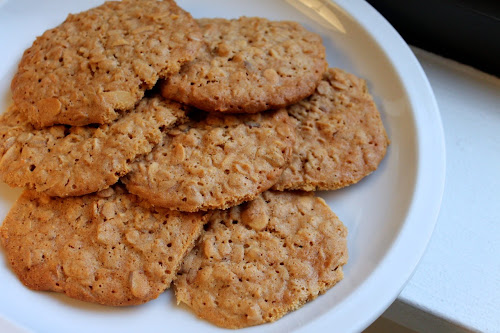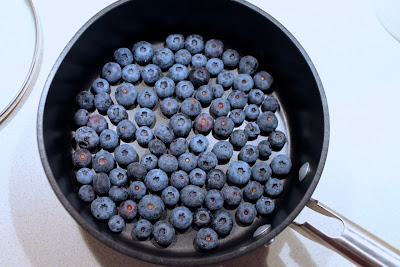What makes a chili? That's a question I'll be exploring this week, as I offer recipes for a variety of chilis, ranging from a bean-free traditional Texas chili, a popular midwestern variation and a mashup I created with Thai influences.
Generally, "chili" is used as shorthand for "chili con carne," a dish that originated in the 19th century frontier southwest, particularly Texas (for more chili history see Wikipedia or this article by Linda Stradley for What's Cooking in America). It consists primarily of stewed beef, chili peppers, onion and tomato. Whether it also includes beans is a major point of contention: some insist that authentic Texas chili con carne does not include beans. But a Google search of "chili con carne" recipes reveals plenty of results that do. So clearly this isn't a consensus issue.
 |
| Chili purists may balk at the volume of vegetables in this dish, hence the "chili-stew" moniker. |
Because the chili recipe below strays pretty far from what would be considered authentic Texas chili, I'm calling it a "chili-stew." Although I often make chili with canned tomatoes, I wanted to take advantage of the ripe tomatoes available right now, which I roasted for this dish, an adaptation of the Turkey-Black Bean Chili I've written about previously. This version has even more vegetables, kidney beans instead of black and more of a barbecue sauce flavor profile. This is the one dish Chris asks for more than any other, and I agree it's quite satisfying any time of year.
BBQ Turkey Chili-Stew
2 lb. ripe tomatoes (for roasting)
1/4 lb. hickory-smoked bacon, cut into 1/4-inch strips
1 lb. ground turkey thigh
1 sweet onion, diced
1 red bell pepper, cored, seeded and diced
1 green bell pepper, cored, seeded and diced
2 carrots, peeled and diced
Seasoned salt, to taste
3 garlic cloves, smashed
6 oz. can tomato paste
Kernels cut off 1 ear of corn
28 oz. can of kidney beans
1/2 tsp. chipotle chili powder (or more if you want)
1/2 tsp. smoked paprika
1 tbsp. dried oregano
1 tbsp. ground cumin
1 tsp. liquid hickory smoke flavor
2 tbsp. brown sugar
2 tbsp. apple cider vinegar
2 tbsp. Worcestershire sauce
5-6 cups of water
Shredded jack cheese (optional topping)
1. To roast the tomatoes, preheat the oven to 350 F. Take 4 ripe tomatoes, quarter them, toss with 1 tbsp. of olive oil and a sprinkle of salt and roast for 2 1/2 hours, stirring every 30 minutes until shriveled, browned in places and most of the liquid has evaporated. Allow to cool and store in the fridge until ready to use.
2. Heat a cast-iron Dutch oven or large deep-sided sauté pan over medium heat. Add bacon and cook, stirring frequently until its fat has rendered and the bacon is brown and crisp. Remove bacon with a slotted spoon and set aside on a paper-towel-lined plate. Remove rendered bacon fat, leaving about 2 tbsp. in the pot. Add the turkey and cook, stirring frequently, until browned. Remove from pot. Add onion, red and green bell pepper and carrots to pot. Season with seasoned salt and cook, stirring frequently, until the vegetables soften. Add the garlic and continue cooking until the vegetables are quite soft and fragrant, even starting to brown, about 10 minutes total.
3. Add back to the pot the cooked bacon and turkey along with the tomato paste, corn, beans, chili powder, smoked paprika, dried oregano, ground cumin, smoke flavor, brown sugar, vinegar, Worcestershire sauce and water. Increase heat to bring to boil. Cover point, reduce heat and simmer over low meat (mixture should bubble gently) for 20 to 30 minutes, stirring occasionally. Remove from heat. Taste chili and adjust seasoning. Serve in bowls topped with shredded cheese.












































